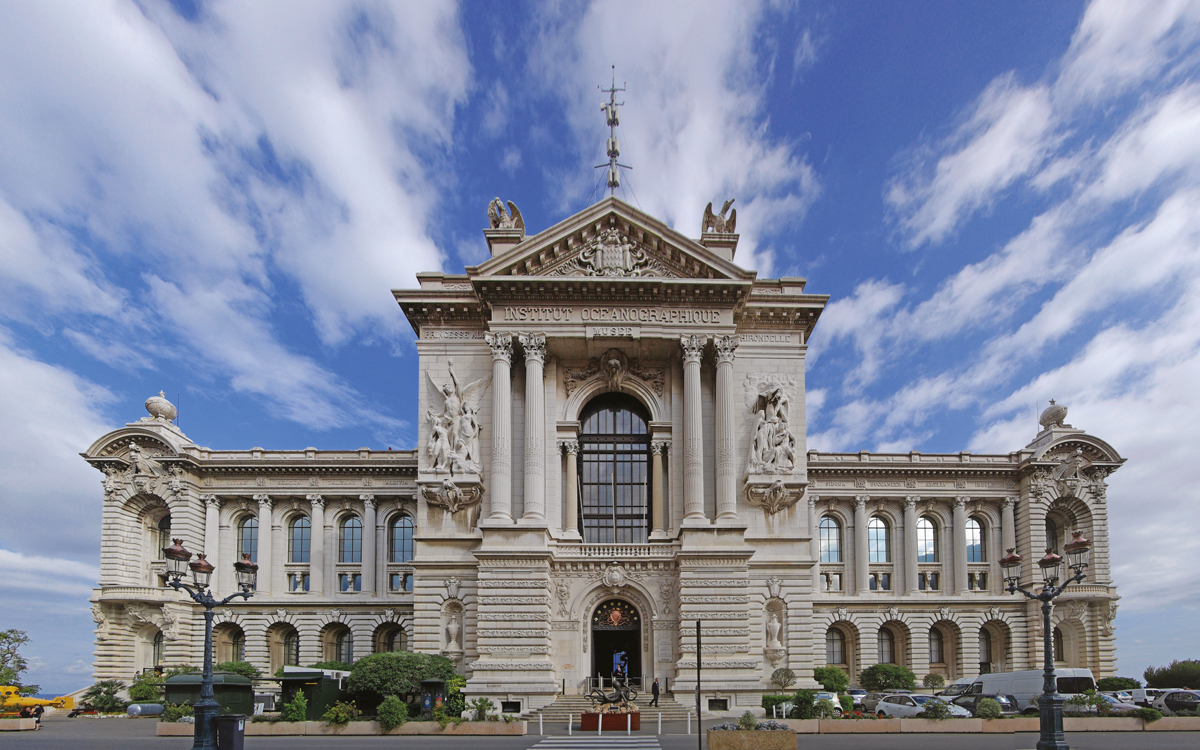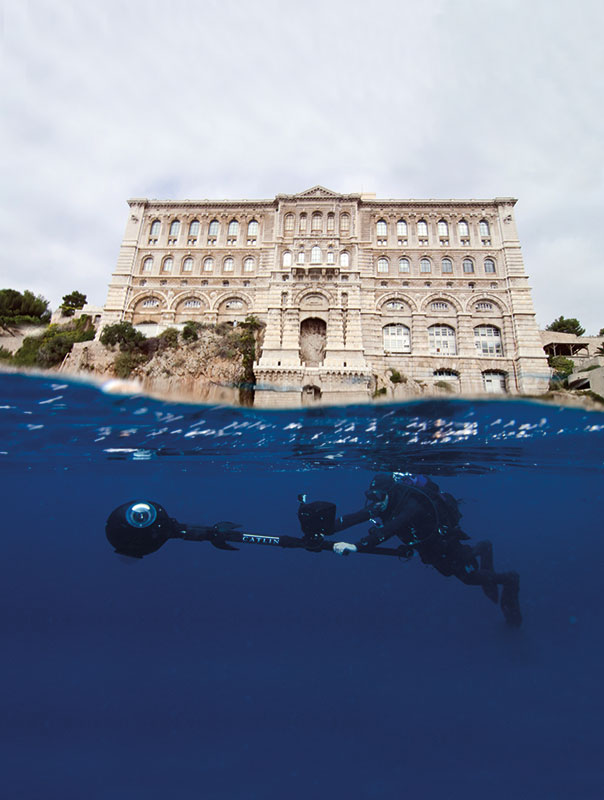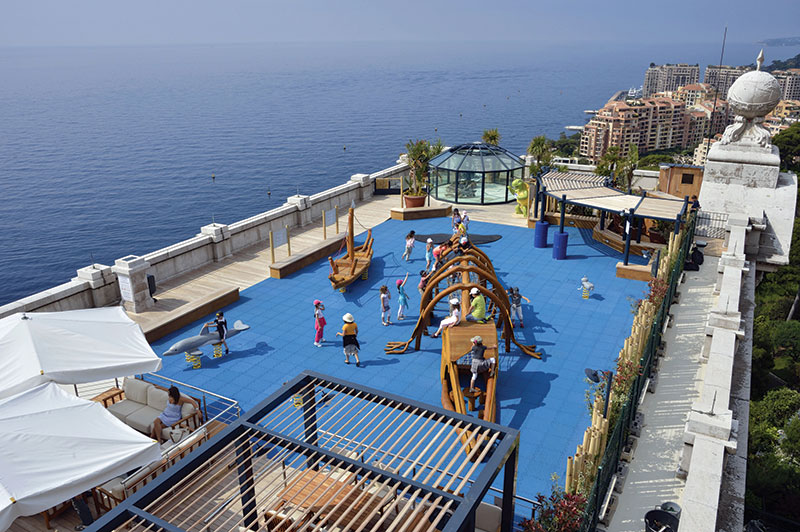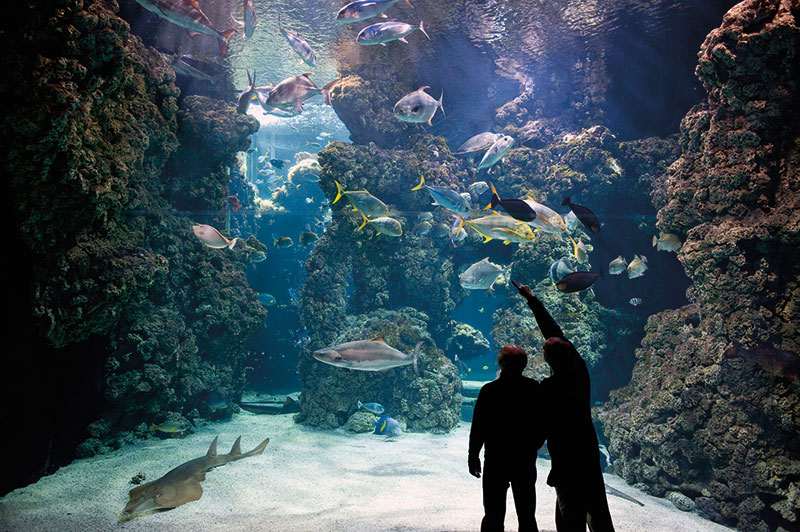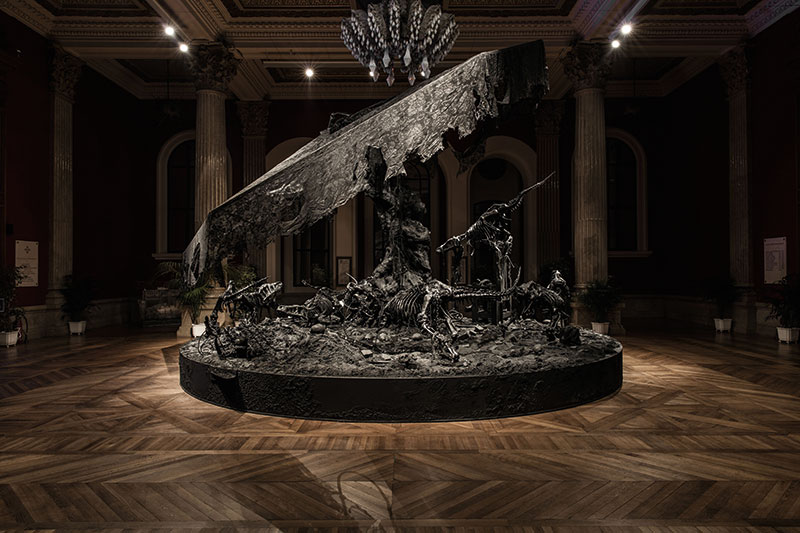“The Temple of the Sea”
There is a palace that exists to consecrate the sea. It was built on the edge of a cliff above the Mediterranean over a century ago, in the sovereign city-state of Monaco, aiming to promote the vital significance of preserving the treasures in the marine ecosystem.
Prince Albert I of Monaco (1858-1922), from his early youth, developed a strong bond with the sea. As a navigator and precursor of Oceanographic Science, he undertook an impressive series of 28 scientific explorations in order to delve into ocean studies, and then to promote and share with humankind his discoveries.
His voyages across the Atlantic Ocean and the Mediterranean Sea have been considered as pioneering. He used advanced oceanographic ships at the time, where he traveled always accompanied by a team of scientists: biologists, zoologists, botanists, geographers, among other specialists. Between 1898 and 1899 he went on one of his most challenging journeys, which aimed to reach the North Pole aboard his scientific yacht, Princess Alice II.
Under the prince’s command, the first maps of the world’s ocean depths were drawn; they were valid until 1944. He used to write about the results of his expeditions, and were published with the title The Navigator’s Path. On September 10, 1889, he became the monarch of the Principality, having to focus on the responsibilities inherent to his position thereafter.
“…The land of Monaco has raised up a proud and inviolable temple to the new divinity which reigns over intelligences!
The Oceanographic Museum
Prince Albert I created the Oceanographic Museum of Monaco with the purpose of promoting the study of the collections and discoveries acquired in the various expeditions that he carried out. Under the motto of its founder, “to know, love and protect the oceans,” the museum encompasses 6,500 m² that remain open to the public and currently exceeds 700,000 visitors annually.
The palace that houses the Monaco Oceanographic Museum is a masterpiece of monumental architecture. It was built in French neoclassical style between 1899 and 1910 by the architect Paul Delefortrie. For its construction, 100,000 tons of La Turbie region stone were needed. The imposing building descends along the cliff for 85m, almost touching the Mediterranean Sea.
Aquariums
In the aquariums of the Monaco Oceanographic Museum there are 6,000 specimens of Mediterranean and tropical fish living in environments that faithfully reproduce their natural habitat, in addition to 200 varieties of invertebrates and around 100 types of coral. The museum has an ecological identity, and it uses sea water to fill the aquariums, allowing visitors to feel as though they really are immersed in the immensities of the underwater world.
Turtle Island
It is an area of environmental mediation for this species that has been present in the planet’s seas and coasts for 150 million years. There is a health center, based on the museum’s experience, that rescues, cares for and releases sea turtles; it also serves as a network connecting several associations that specialize in safeguarding turtles.
Shark Lagoon
In a giant, six-meter deep fish tank, containing 450,000L of sea water, live several shark species, visible from four different points of view. In the same space, the Djibouti reef grows, one of the first ecosystems of its kind to be created with human intervention in 1989. This place is dedicated to the importance of sharks and reefs to preserve the good health of the seas.
Other Attractions in the Museum
The history of underwater exploration, marine mammals, and natural history, are some of the themes in several of its exhibition halls. It is also possible to visit Commander Jacques-Yves Cousteau’s underwater exploration gadgetry—he was the museum’s director for more than 30 years—or visit Prince Albert Ist Room, which is dedicated to the life and work of Prince Albert I, who also founded the Institute of Oceanography in Paris.
Artist Mark Dion’s exposition is quite extraordinary; he created a monumental cabinet to house a world of curiosities of the museum that ranges from libraries, skeletons, fossils, texts, maps and diverse objects; among them, Karl Heinrich Klingert’s diving suit, which was developed in 1797, and with which its inventor remained several minutes underwater,12m deep.O
Texto: Maruchy Behmaras ± Foto: :© T.Ameller / BSSL IMAGES AMAZON / © Martin Delpozo / Musée océanographique de Monaco. / OCEANO / Architecture / CMS / GEOCITIES

